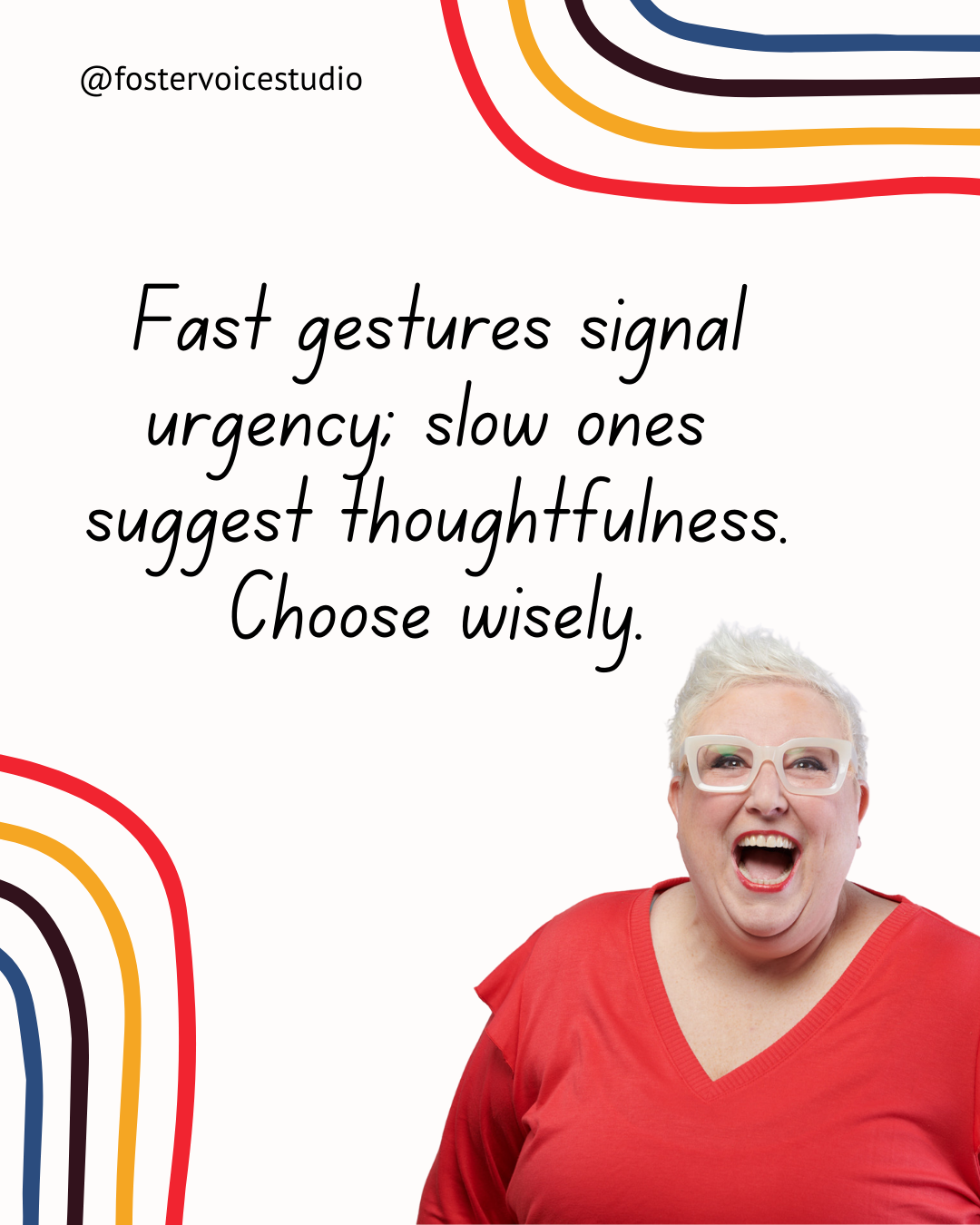Your Hands Are Speaking: How Gestures Shape Juror Perception in the Courtroom
The Unspoken Side of Courtroom Communication
If you’ve ever been told to “stop talking with your hands,” this one’s for you.
Because here’s the truth: your hands are already talking—whether you mean them to or not.
Movement, when done with purpose, can add life and authority to your courtroom presence. But both extremes—too much or too little—undermine your leadership.
If you’re overactive, you look chaotic.
If you’re underactive, you look rigid.
Neither communicates confidence, credibility, or control.
Let’s talk about why your hands matter as much as your words—and how you can use them strategically to keep jurors engaged, attentive, and emotionally aligned with your message.
Why Your Hands Matter as Much as Your Words
What many trial attorneys don’t realize is that gestures are part of your communication system, not an accessory. They're not decoration, or a thoughtless add-on.
Psychologists call them “co-speech gestures.” They’re neurologically tied to the same language centers that produce your speech.
According to research from Dr. Susan Goldin-Meadow at the University of Chicago, gesture doesn’t just help the listener—it also helps the speaker think and communicate more clearly.
For jurors, meaningful gestures do three key things:
-
Reinforce your message through visual alignment.
-
Help them process and remember complex information.
-
Signal authenticity—because genuine communication is embodied, not just verbal.
But random or disconnected gestures? They create confusion. Jurors have to split their attention between what they hear and what they see. And when their working memory gets overloaded, retention drops.
They only have so much room in their working memory before they hit maximum cognitive load.
The Power of Gesture—When It Works
Purposeful movement gives your words emotional resonance and a fuller meaning. The key is to connect gesture WITH the meaning.
✅ Quick, sharp movements
Signal urgency, excitement, or even anxiety. Used intentionally, they’re perfect for highlighting a turning point or showing time-sensitive tension in your case narrative.
✅ Slow, deliberate gestures
Communicate thoughtfulness and control. They allow jurors to follow your reasoning step-by-step and mirror the cadence of reflective thought.
When gestures match words, you’re not just talking—you’re teaching. You’re giving jurors two channels of information (auditory and visual), which strengthens comprehension and recall.
DUEL-ENCODING for the win!
When Gestures Backfire
But things can go sideways when your hands move without purpose.
Many attorneys believe that constant movement makes them look passionate or relatable. Instead, it often looks ungrounded.
REMEMBER: Every gesture you make adds one more data point for jurors to process—and if those gestures don’t connect to your message, they drain cognitive energy from your argument.
This isn’t a style issue—it’s a neuroscience issue.
Jurors only have so much working memory to process what you say. When gestures contradict your tone or your words, the brain flags the inconsistency as incongruent—and that creates mistrust.
So instead of helping jurors believe you, your hands may be making them doubt you.
How to Be Strategic with Your Gestures
Like everything else in courtroom communication, the solution is intention.
🎯 Match gestures to message:
-
When describing sequence, mark “first,” “second,” “third” with your hands.
-
When explaining size or scope, use gestures to show scale.
-
When emphasizing weight or gravity, press your palms downward to signal importance.
🎯 Pair gesture with tone:
-
Slow gestures + calm voice → de-escalation, reassurance, stability.
-
Faster gestures + stronger tone → urgency, passion, momentum.
When tone and gesture are aligned, you create what neuroscientists call dual-channel encoding—meaning jurors both see and hear your message emotionally and intellectually. That’s when persuasion happens.
The Alignment Check: Hands, Tone, and Intent
Before your next opening or closing, when you're rehearsing or in a session with your presentation coach, ask yourself:
-
Does this movement support my message?
-
Does it align with my tone and emotional intent?
-
Or is it just nervous energy escaping through my fingertips?
Because jurors aren’t just watching your PowerPoint slides or listening to your evidence.
They’re reading you.
Your voice, your face, your breathing, AND your hands all work together to create a complete emotional picture of credibility (Hopefully. That's the goal!).
Key Takeaway
Gestures are not decoration.
They are communication.
When used intentionally, your hands reinforce, clarify, and deepen your message.
When used unconsciously, they dilute it and are more distracting than anything else.
So, as you prepare for your next trial, don’t just rehearse your words—rehearse your delivery. Align your gestures with your tone, your tone with your intent, and your intent with the emotion you want jurors to feel.
Because every part of you is speaking in court.
Make sure your body is saying what your words mean.
LET'S STAY CONNECTED
You’re already speaking. Let’s make it count.
Get one smart, time-saving vocal tip each Tuesday to help jurors learn faster, retain more, and stay connected — so your message lands the first time.
You're safe with me. I'll never spam you or sell your contact info.


